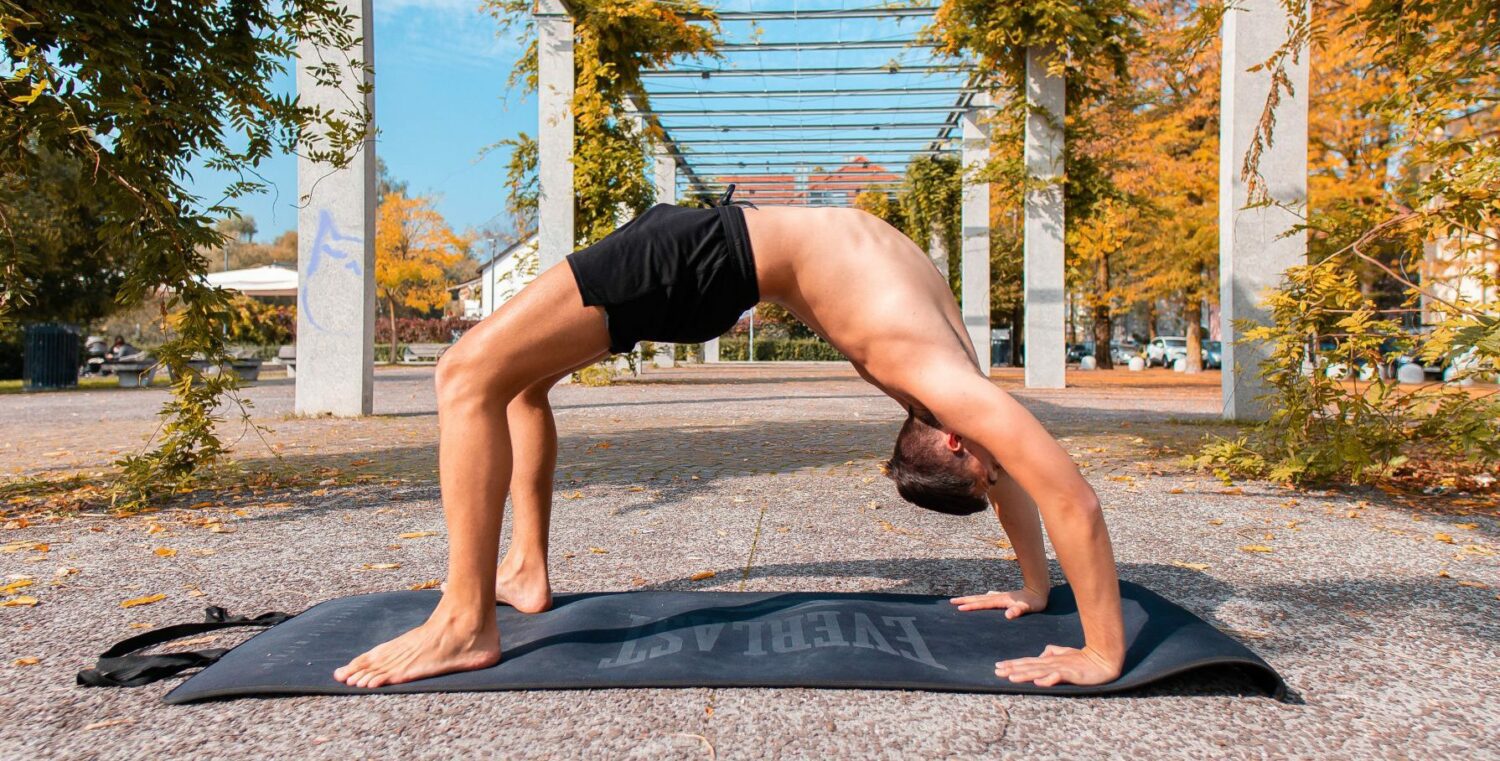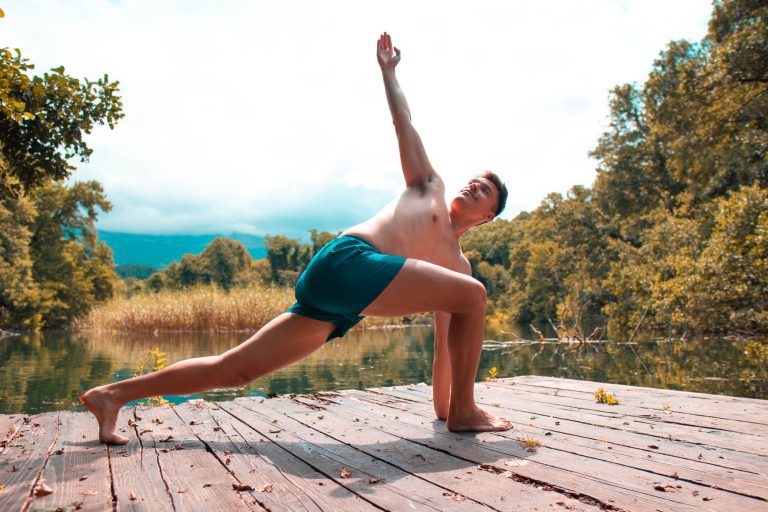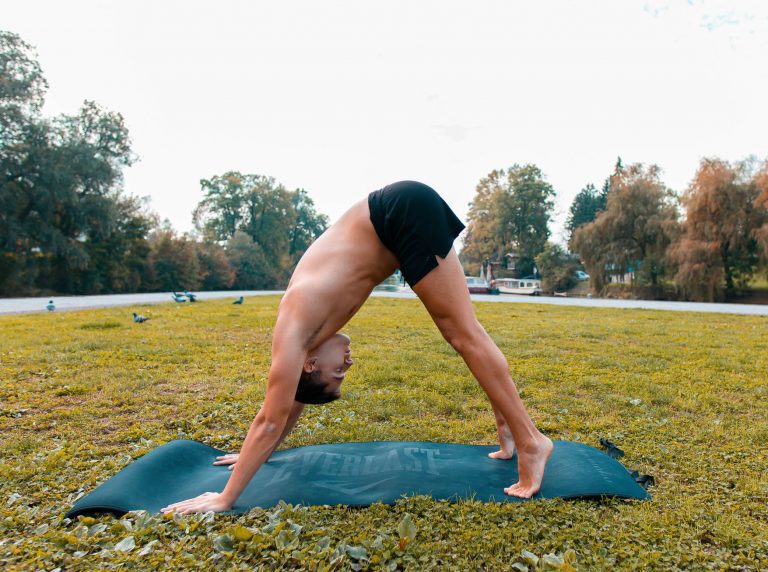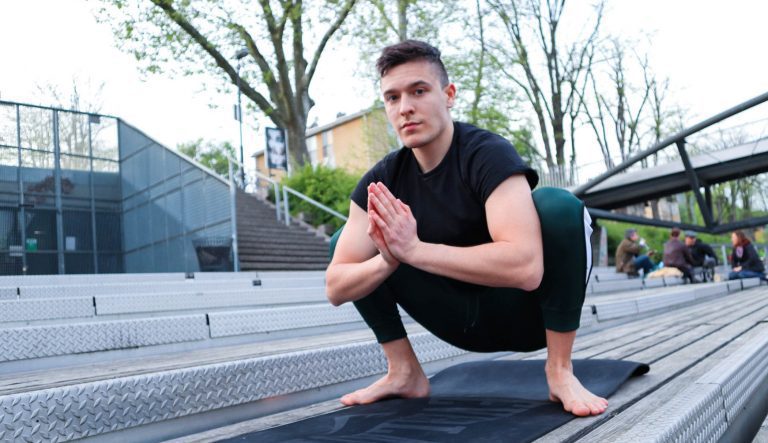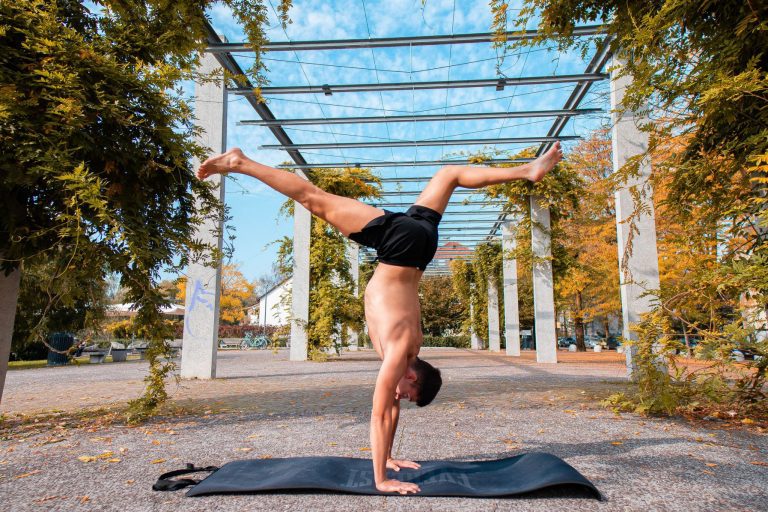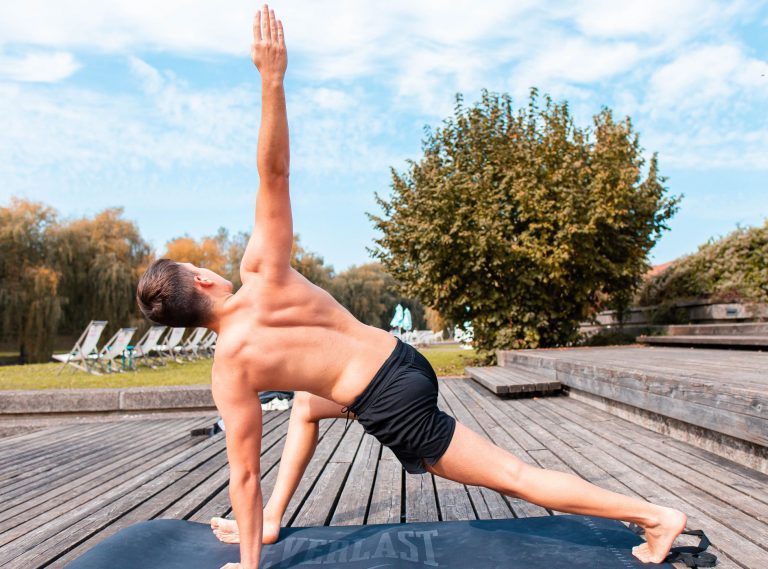Iyengar Yoga Poses, Benefits and Props
Iyengar yoga is a style of yogic practice developed by B. K. S Iyengar. It is the ultimate yoga practice that focuses on detail, correct posture, precision, and body alignment through the poses (asanas) with the use of props that assist the student. A systematic process for the cultivation of strength, flexibility, and body awareness.
B. K. S. Iyengar developed a system of exercise that make up the bulk of today’s Iyengar Yoga poses, believed to help improve one’s health. At first, he had poor health as a child, developed a practice, and trained continually, improving his own health. After that, he started gradually teaching other students and grew this yoga style using Patanjali’s Yoga Sutra as a base.
Most popular yoga style
It is said that Iyengar yoga is among the most popular, most frequently trained styles of yoga because of its adaptability. It can be practiced by anyone, including both sexes, different religions, all levels of practitioners, and body types. Its adaptability enables to spread of this style to many people around the world. Suitable for beginners, elderly people, and people with limited physical performance or inability to recover quickly. It is mostly preferred by people with chronic pain.
If you’re interested in discovering different yoga types, check out our top picks:
- Yin Yoga Style 101 | Restorative Yoga For Flexibility
- Ashtanga Vinyasa Yoga | 8 Limbs of Yoga
- Vinyasa Yoga Flow | Versatile & Dynamic Yoga Style + Benefits
Training structure
This yoga style offers gradual progress, taken with full caution and lots of energy focused on one’s body sensations. Everything is done slowly, progressively, and safely with the teacher’s assistance and guidance. Primary postures are there to open up and activate the whole body. To bring awareness, observe our thoughts ad focus attention on our body. At first, we correct primary postures and learn how to stand. Standing postures are the foundation, then students slowly progress towards backbends, forward bends, and finally inversions and balancing asanas. After some time, training yogis are practicing breath control, slowly incorporating it with the asanas.
Teaching method
Only licensed Iyengar yoga teacher is allowed to teach Iyengar yoga, because of its complexity and anatomy knowledge required to guide students through poses that can improve flexibility or strength, while being completely safe at the same time. It doesn’t matter when you will start attending this practice, the teacher will adapt and will first teach you alignment in basic standing poses. Improvement in flexibility or strength or transitioning into harder, more advanced poses come with time, gradually.
Use of props
Yoga style like Iyengar is famous for its use of props. Students use blocks, bolsters, chairs, straps, and blankets to assist them while holding or transitioning in certain asanas. This can provide students with safety and enable them to gradually progress. Assistance is crucial, especially for those who are not flexible or have chronic pain. Assistance is a must for people with physical injury or acute pain, students must be open about how they feel and speak up if in need of any assistance or guidance.
Combination of Hatha and Forrest Yoga
Iyengar yoga style has incorporated elements of Hatha and Forrest yoga. It is a combination of Anusara hatha yoga and Forrest yoga, which is holding positions for a longer time while completely engaging the core muscles. Anusara on the other side is a branch of hatha yoga that besides spiritual teachings, holds principles of body alignment.
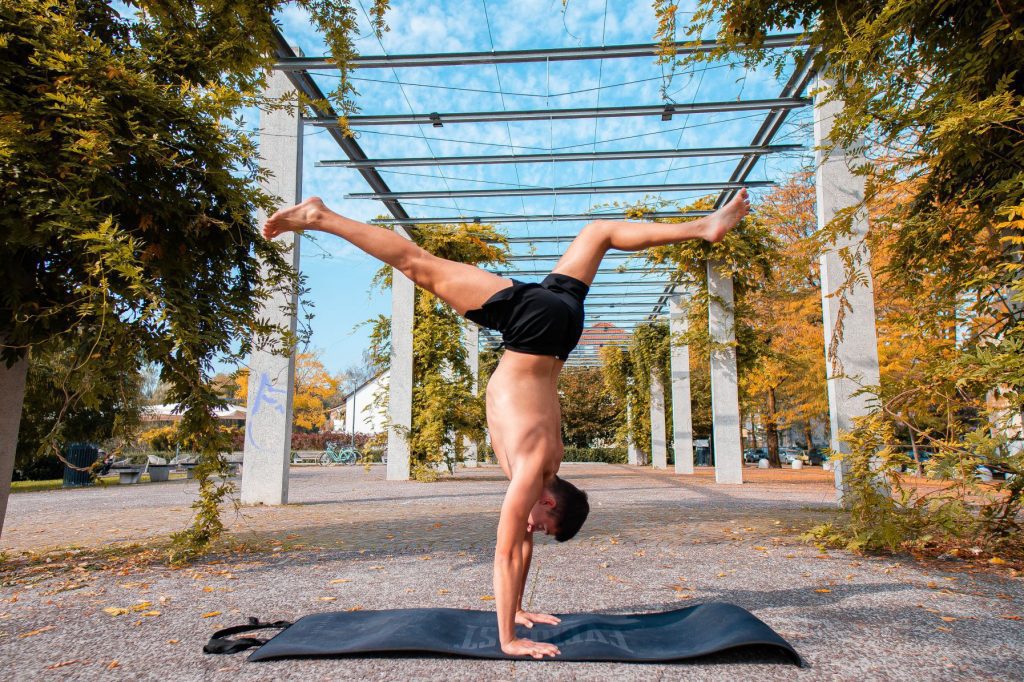
Body alignment
The main purpose of this style or set of exercises is alignment. The teacher is there to guide students in correct postures while maintaining breath control and balance. Alignment of the body, learning how to stand, sit, walk or hold specific asana is a crucial part of this training. That is the beauty of this yoga style.
Proprioception, Kinesthesia
Kinesthesia or proprioception is the most important point of focus in Iyengar yoga. It is what we call body awareness. Kinesthetics are unconscious or conscious perceptions of a moving body.
Proprioception is a sense of connective tissue positioning and bodily movement. In Iyengar yoga we try to maximize the awareness of our body, completely engaging this sense to understand deeper connections on an anatomical level, as to where our ligaments, tendons, muscles, and bones bind to each other, their origin and insertion, their main function and connection.
Increasing this awareness can help us improve our posture, and become stronger and more balanced on a physical level in our everyday life while providing us with a more functional body which comes from improved muscle flexibility and strength. Balancing poses can improve the function of our vestibular system, especially those that we do with closed eyes or in complete darkness.
Light on Yoga
Iyengar’s most popular bestselling book “Light on Yoga” translated into 23 languages, written in 1966, is known to be the encyclopedia of yoga. This book is providing us with knowledge of yoga philosophy and practice. The author shows the ancient healing discipline while providing illustrations and practical guides for all the asanas and breathing techniques. Describes more than 200 asanas of which there are around 600 photos of Iyengar’s demonstration.
Quality over quantity
Quality of movement over quantity is preferred. In this yogic style, students are actively engaged in learning what feels good, and what is alignment in the body while growing their body awareness. Students practice through repetitions of poses that are held for a longer duration of time in which teachers assist them into a correct posture or provide guidelines. The main goal is to feel and understand the body, not to get into as many poses as we can, this is slow-paced training with a great deal of concentration. Students are learning and correcting postures through trial and error.
Suitable for beginners or injured people
Beauty of this Iyengar yoga practice is its adaptability. Certified Iyengar yoga teachers must know how to start slowly and gradually with beginners and to fix every pain that happens along the way of doing or transitioning to the postures. This is where the use of props like chairs, pillows, or blocks comes in place since this style requires comfort and steadiness, not pain. So injured people, older people, or those who are not flexible, can all join the ride.
Stress relief
Iyengar is known for holding poses for a longer time which is known to significantly improve flexibility. But just as flexibility improves, our sleep does. The main reason for this is stress management. Most of the time we think we are stressed mentally, but stress manifests physically in our bodies. When stressed, we tend to breathe shallow, short breaths, we tend to hold a lot of tension in our muscles and slouch forward. What this yogic practice can therefore do is to enable your mind to shift to presence, release muscle tension on a physical level through deactivating overactive motor neurons, and release endorphins.
Trikonasana
Main Iyengar asana is Trikonasana. Known as the extended triangle pose, it is performed on both sides left and right. It is a standing posture done with our feet apart, and straight legs while turning one foot to the outside and the back foot 45 degrees on the inside. The front foot heel aligns with the back foot arch, keeping the heels in line with the hips at first, then gradually progressing. Arms spread out to the sides, spine twisted, palms facing down with maximal trunk extension. Usually performed with a block under one arm for beginners.
Inversion poses
Starting with standing poses, slowly progressing through backbends and forward bends to more advanced balancing poses to inversions. This style incorporates poses like Sirsasana – inverted headstand pose and Sarvangasana – also an inverted asana used for throat chakra balancing and digestion in hatha yoga.
Bonus: Iyengar yoga does not require its students to adopt a certain belief or be part of a certain religion, or ideology or develop a specific perception. This allows for a bigger audience. Instead of ideology, it is a teaching of concentration structured to connect mind, body, and soul through bodily alignment. Helps in emotional balance.
Iyengar license
In order for one to teach Iyengar yoga, he/she has to undergo three years of yoga training under the supervision of an Iyengar yoga master or teacher, to earn a certificate. There are intermediate and senior levels which of course, require a lot more time. Western practitioners have to practice yoga for eight straight years before earning a license. The best place for Westerners to earn certification is RIMY (established 1975) an institute in Pune, Maharashtra, India.
Self-development
Introspection, known as contemplation on the philosophy of being and observance of one’s thoughts, feelings, and motives is part of Iyengar yoga. Studying ourselves is part of every yoga style. It slowly makes us understand below the surface, listen deeper and control our breath. This, therefore, affects our perception of reality and improves self-esteem and confidence.
Iyengar Yoga benefits
- relieves muscle tension, eliminates stress
- improves posture through muscle assessment
- increases flexibility, strength, and balance
- improves body awareness and kinesthetics
- improves cognition – memory, and focus
- breath control, body-mind connection
- decreases chronic pain
conclusion
Iyengar yoga emphasizes body awareness, movement precision, and posture correctness. It is a yoga style that develops strength, mobility, flexibility, and balance. Iyengar yoga is very customizable, with the use of props, which is one of its main characteristics. Created by B. K. S Iyengar, it is one of the most popular styles, for both beginners and advanced practitioners.

